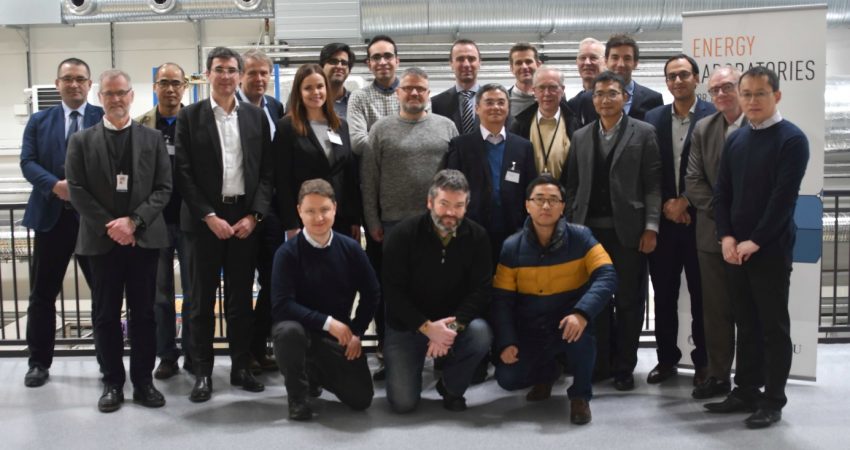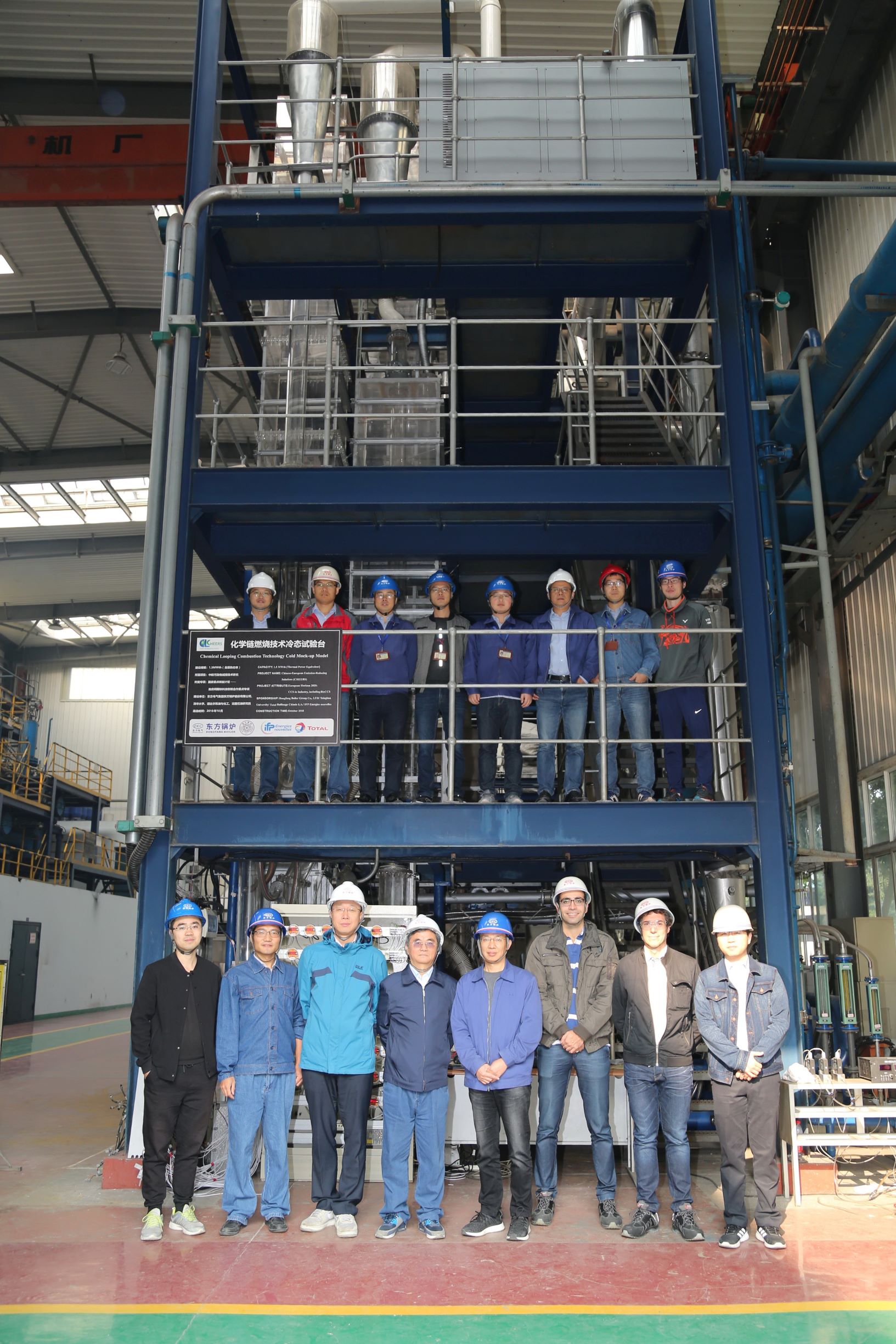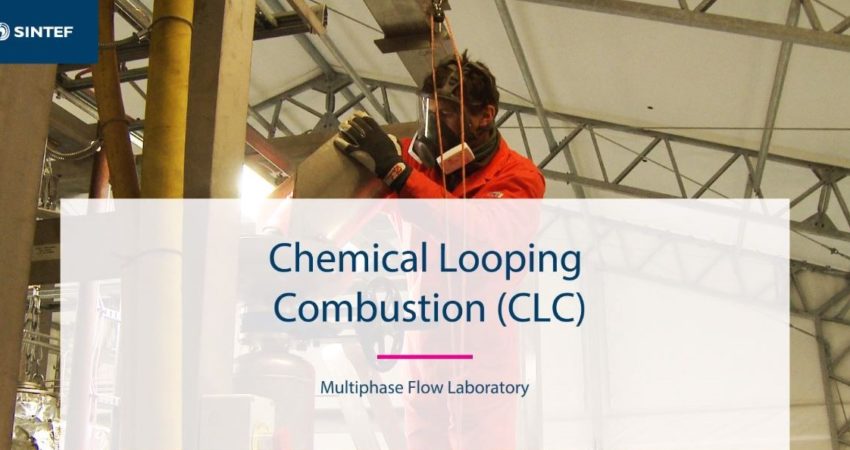
Press release: Promising results a year after kick-off of the CHEERS project
From 14 to 16 November, representatives of the CHEERS project consortium gathered at the second annual meeting held in Lyon, France. The updates shared during the meeting included key results from the first project phases and new developments presented by the partners of the consortium.
A year after the project set out to improve the efficacy of CO2 capture in industry, the project partners have achieved some promising results. The active collaboration of 9 partner organisations has resulted in a number of scientific publications, presentations at international conferences and most importantly, the design, construction and commissioning of a cold mock-up of the of the Chemical Looping Combustion technology.

The Cold Mock-Up with Representatives from the Core Design Team (representatives from Tsinghua University, IFPEN, TOTAL and Dongfang Boiler Co., picture taken at test site in Deyang)
To achieve its goal, CHEERS will test and verify a 2nd generation chemical-looping technology, starting at laboratory scale and then as a 3MWth system prototype for demonstration in an operational environment. The construction of the final demonstration unit is planned to be finalised by March 2021.
As its name suggests, the Chinese-European Emission-Reducing Solutions project aims to develop a chemical looping capture technology that will contribute to climate change mitigation in industrial applications. Finding more efficient ways of capturing CO2 emissions from industrial sources is an important part of achieving climate goals. Increasing capture efficiency directly reduces the energy requirements for a relevant climate change mitigation technology referred to in the newest IPCC report, carbon capture and storage. By making the technology more cost-efficient, the project will also help in reconciling the competitiveness of industries both in Europe and China with their respective climate goals.
With a budget of €16.8 million, the project is partially financed by the European Union’s Horizon 2020 research and innovation programme under grant agreement No. 764697 together with the Chinese Ministry of Science and Technology (MOST) and Chinese industry.

What does a CLC testing facility look like?
The CHEERS project works on developing a chemical-looping technology tested at laboratory scale (up to 150 kWth). Within five years, the goal of the project is to develop the core technology into a 3MWth system prototype for demonstration in an operational environment.
That same CLC technology is being tested at SINTEF’s testing site in Tiller, Norway.
In the following videos, SINTEFs research scientists, Øyvind Langørgen and Inge Saanum, give a short rundown on what happens during the testing phase. Learn more about CLC and have a look at what a ”good day in the lab” looks like at the Tiller testing site:
”Welcome to the CLC rig at Tiller. Today we’re going to run a test campaign using copper oxide as oxygen carrier and methane as fuel gas.” says Øyvind Langørgen, research scientist at SINTEF Energy.
”The test is finished and we are very pleased with the results” says Inge Saanum, research scientist at SINTED Energy while going through the test results.
”This method is cheaper and requires less energy than many other methods” the video concludes.
